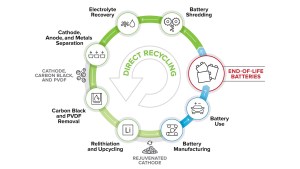A US company which is developing a kinetic energy-driven launch system has conducted its first test flight in the deserts of New Mexico at SpacePort America.
The idea behind SpinLaunch is to use a vacuum-sealed centrifuge which will spin the rocket at several times the speed of sound – around 5,000 mph – before releasing.
This will bring the rocket at a high enough altitude that it will only require small engines to bring it into the desired orbit. This will significantly reduce the size of a normally required rocket as well as its complexity and costs.
With a payload of around 200kg, this will be enough for several small satellites.

According to CNBC, SpinLaunch’s first suborbital flight utilised about 20 percent of the accelerator’s full power capacity for the launch and reached a claimed test altitude “in the tens of thousands of feet”.
For this test flight, the SpinLaunch suborbital accelerator used was a model that is about one-third the size of the one the company plans to build. Even so, it stands 165 feet tall, higher than the Statue of Liberty.
The company anticipates it will be able to support dozens of launches per day, from a costal location which has yet not been revealed.
During early feasibility analysis of SpinLaunch’s global architecture, one area of primary interest was g-hardening. As such, an in-depth evaluation into existing industry examples of high-g capable sensors and systems was undertaken by the company.
Early research identified promising examples of complex high-g systems in industry including artillery launched drones with deployable wings, propulsion, and optics. Following the completion of the 12 m prototype, a system capable of testing to over 20,000G’s, SpinLaunch’s engineering team began evaluating a variety of hardware packages at the 10,000G that components endure during the launch.
“Through this testing, we’ve been able to demonstrate the impressive ability of satellite systems to readily handle the centripetal environment,” says the company. Learn more about adapting satellites for SpinLaunch on its Space Systems page.

Photos: SpinLaunch







